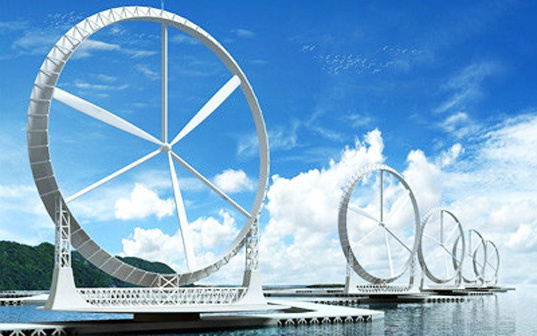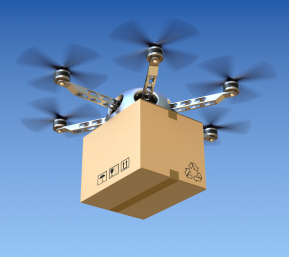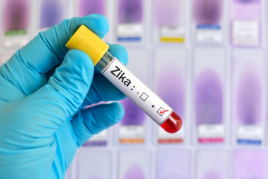R.E. Kearney's Blog, page 36
October 13, 2016
Wind Turbines – The Future of Clean Energy Sources
In 1888, Charles F. Bush invented the first electricity-generating wind turbine in Cleveland, Ohio. It had a diameter of 17 metres and was able to generate 12 kW of power. Wind turbines have evolved significantly since, and the Wind Engineering Section of Kushu University, in Japan, has found a way to potentially triple their energy output. One of the aims is to make wind energy cheaper than both coal and nuclear power in the country, and eventually the world.
 During the Yokohama Renewable Energy International Exhibition 2010, they unveiled the new design, which works by putting a wind lens around the turbine blades. This also makes it possible to increase their safety levels, as well as decrease the unbearable noise usually associated with wind turbines. The wind lens is a brim that surrounds the inside of the blades and diverts the air from the exhaust outflow, which is located behind them. The turbulence then creates a low pressure zone behind the turbine, which causes more wind to pass through it. The blade rotation increases and subsequently the energy output. The engineers believe that each lens would be able to provide enough energy for an average household.
During the Yokohama Renewable Energy International Exhibition 2010, they unveiled the new design, which works by putting a wind lens around the turbine blades. This also makes it possible to increase their safety levels, as well as decrease the unbearable noise usually associated with wind turbines. The wind lens is a brim that surrounds the inside of the blades and diverts the air from the exhaust outflow, which is located behind them. The turbulence then creates a low pressure zone behind the turbine, which causes more wind to pass through it. The blade rotation increases and subsequently the energy output. The engineers believe that each lens would be able to provide enough energy for an average household.
The proposed end structure would be similar in shape to a giant honeycomb, but the Wind Engineering Section of the University finds it challenging to apply these lenses to larger sized turbines. To test the theory they constructed two wind turbines on the campus, which are each 34m high and able to generate 100kW of power. They will use these models to figure out ways to apply the technology to larger turbines in the future. Each turbine also has a rotor which spans 12.8m and a diffuser with a diameter of 15.4 m.
 These wind turbines are being monitored as part of their larger project to build an offshore energy farm. The wind turbines will be mounted on a hexagonal shaped base, which is low in cost but sufficiently sturdy to withstand the marine conditions. Placing these in coastal areas will take advantage of the sea breezes, and reveal the probability of them being a main source of power for the country. The bases also make it possible to link other turbines together and create larger platforms.
These wind turbines are being monitored as part of their larger project to build an offshore energy farm. The wind turbines will be mounted on a hexagonal shaped base, which is low in cost but sufficiently sturdy to withstand the marine conditions. Placing these in coastal areas will take advantage of the sea breezes, and reveal the probability of them being a main source of power for the country. The bases also make it possible to link other turbines together and create larger platforms.
The technology has already been applied to smaller units, averaging between 3 and 5 kW of output, which are being used by businesses to increase their energy while lowering the costs. Kushu University believes that the design will extend worldwide after the field tests prove that it is a much more efficient energy source. This would be good for both the countries involved and the world in general as this clean energy source would significantly decrease atmospheric pollution.


October 6, 2016
World’s Largest Telescope – China takes Exploring the Universe to Another Level
 Many of the countries of the world are experimenting with different ways to find out more about the Universe, especially the possibility of finding intelligent life outside of our planet. China has been a large contributor to this extra-terrestrial search, and the country has recently unveiled their next step in learning more about the infinite nature of the Universe. They have done this by launching a 500m Aperture Spherical Telescope (FAST), which has now become the largest in the world. Approximately the size of 30 football fields, FAST took five years to be built and launched. The single dish telescope has been nicknamed the Tianyan, or Eye of Heaven, because it is expected to be able to capture a great deal more of what happens outside of our atmosphere than we have previously been aware of.
Many of the countries of the world are experimenting with different ways to find out more about the Universe, especially the possibility of finding intelligent life outside of our planet. China has been a large contributor to this extra-terrestrial search, and the country has recently unveiled their next step in learning more about the infinite nature of the Universe. They have done this by launching a 500m Aperture Spherical Telescope (FAST), which has now become the largest in the world. Approximately the size of 30 football fields, FAST took five years to be built and launched. The single dish telescope has been nicknamed the Tianyan, or Eye of Heaven, because it is expected to be able to capture a great deal more of what happens outside of our atmosphere than we have previously been aware of.
The telescope’s installation has required many changes in the surrounding area. Under the watchful eye of its rivals, the Chinese government had to find an area with at least a three mile radius of radio silence for the telescope to work. After locating the perfect spot in Guizhou, part of the country’s south-west province, they realized that in excess of 8000 villagers would need to be relocated. The total cost of the project included $269 million for moving its citizens, and another $180 million to build the telescope.
China sees the giant telescope as worth the time, effort and finances that were involved in completing the project, as it will now be able to monitor two to three times more of the area around our planet than previous telescopes. This is a result of its specific design of 4450 eleven meter panels that reflect radio waves, to a 30 ton ‘retina’ which is suspended in the middle of the unit. The telescope will then be monitored so that these signals can be interpreted. This makes FAST five to ten times more likely to discover signs of an alien race, than previous telescopes would have been able to.
Apart from the possibility of other life forms, the Universe has many mysteries such as dark matter and the early stages of its development, which the Chinese believe that FAST will be able to help us gain a greater understanding of. In addition, the telescope is able to capture images that are further away from earth including the layout and terrain of darker planets. After the initial testing period, China has agreed that scientists from other nations will be able to use the Eye of Heaven in their research, in an effort to gain as much knowledge as possible.


September 29, 2016
Self-Driven Cars – Improving the Taxi Experience
Robot labor has been a source of controversy for many years, on one hand it will make things easier and cheaper but on the other it will put many people out of their jobs. Taxi companies have been among the first to experiment with this idea, and road use for these vehicles have been recently approved.
 1. Uber
1. UberAs one of the world’s leading taxi companies, Uber is always looking for a way to expand their business. This includes self-driving cars, and even though the drivers have been against their use, the company released their first set of vehicles in Pittsburgh in August. This is more beneficial to the company and profits will certainly increase. Their major selling point is the fact that journeys will be cheaper, because passengers will no longer be paying for the driver as well as the car. Another advantage is that the robots will be able to work non-stop, whereas human drivers can only work for a maximum of 12 hours per day.
The self-driven cars will initially be available to Uber’s most loyal customers, who can continue calling a car via the app. Each car comes with a ‘safety driver,’ who will take over in the case of an emergency. In order to fulfil these requirements, Uber and Volvo have formed a partnership which will be the beginning of outfitting the entire company with these vehicles.
 2. Nutonomy
2. NutonomyEven though Uber’s robotic cars are significantly more advanced than others in its field, they weren’t the first taxi company to use self-driving vehicles on public streets. In Singapore, Nutonomy customers already had the option of ordering a self-driving taxi using its app. The company has been giving complimentary journeys while the cars are in the experimental stages. They are trying to determine how much of the population will notice a difference in the ride, and whether or not they will like or dislike the idea of technology taking them from one place to another. Even though it is currently mandatory to have a safety driver in each vehicle, the company is looking forward to when it becomes legally approved for the cars to drive without them. They propose that these journeys will become safer because there will be less involved in getting the vehicles ready for use.
Regardless of their customers’ views, these self-driven vehicles are already a part of our travel. The next phase is that personal vehicles will become self-driven, and major car manufacturers are putting steps in place to get them approved for public road use as soon as possible.


September 22, 2016
Drones – Using them in Daily Life
Unmanned flying crafts, drones, have been used by the military for years in situations where manned flight is considered too risky or impossible. Like most military technology, it has been expanded and drones are now being used in daily life in order to make tasks easier.
 Amazon’s Delivery Drone
Amazon’s Delivery Drone Amazon has already tested and revised its first prototype, making progress towards their goal of using drones to make small deliveries to their customers. Each drone would be able to carry 5lbs in packages and deliver them directly to customers’ doors, within 30 minutes. Normally a pilot is only able to control one drone at a time, but amazon has improved on this, making it possible for one pilot to control multiple drones simultaneously. Amazon hasn’t given a date when they will start using the drones for delivery, but continue to test them in several different countries.
PD6B-AW-ARM
Japanese company Prodrone knows that the more a drone can do, the easier it will be to integrate it into people’s lives. Keeping this in mind they have invented the PD6B-AW-ARM which is able to lift items that weigh up to 22lbs, with its 5-axis grasping arms. The drone is specially stabilised during flight in order to be able to transport the objects. Fully charged it will be able to fly up to speeds of 37mph and heights of 16,404 ft., for a maximum of ½ hour. It has also been designed for use in and around the home, including improvement projects, as it can turn on and off switches, cut cables and join items. This technology would also be greatly beneficially to people that have limited mobility, allowing them to become more independent.
Facebook’s Wi-Fi Wonder
The internet is a major part of both our business and personal life, but over 2/3 of the people in the world are still living without access to Wi-Fi. Facebook’s founder, Mark Zuckerberg, has embarked on a project to bring the internet to everybody using solar powered drones. Each of these environmentally friendly drones would be about the size of a 727 aircraft, but weighing significantly less and able to hover between 60,000 and 90,000 ft. They would be able to stay airborne for up to three months, with each providing internet access across a 50 mile radius. The long term goal is to have enough of them working side by side in order for the entire world to be able to access the internet.
Cameras
In both military and civilian life one of the first uses of drone technology was to enable us to view and take pictures of previously inaccessible places. They have been used in order to capture spectacular images of plants, animals, the inside of caves, underground havens, the earth from different angles and many more images that we would otherwise never have seen. This has started a new era in photography and more powerful drone cameras are being designed all the time. They are also used by the military and law officers in situations that may be dangerous, e.g. when trying to rescue hostages, in order to save lives and make a record of what is taking place.


September 15, 2016
The EM Drive – Revolutionizing Space Exploration
One of the biggest obstacles we have faced when it comes to going to other planets is the amount of time that it will take for us to get there. NASA, and other independent space exploration teams, has been working on a solution to this for decades. In 1999, a British scientist, Roger Shawyer, came up with the idea of producing an EM drive (short for electromagnetic propulsion drive) which would be able to cover these amazing distances in significantly less time. The only opposition he has had to making the EM drive is the fact that it completely defies one of the fundamental laws of physics.
Newton’s third law is: ‘To each action there is an equal and opposite reaction.’ The law of conservation of momentum breaks this down further; to state that for any thruster to gain momentum it will need to expel a propellant in the opposite direction. The design of the EM drive would allow it to go in one direction without any propellant in the other. It would operate by turning radio waves into thrust by bouncing them back and forth inside of a cone-shaped closed metal cavity. The other end of the EM drive will then thrust forward. A range of tests at NASA’s Eagleworks Laboratory have proven that this ‘impossible’ device works, even though scientists are still unable to come up with an explanation as to how it can defy one of Newton’s laws.
 The possibilities of space exploration would become unlimited with the use of the EM drive, which would be able to transport humans to Mars in 70 days (presently it takes between 150 and 300). It is rumoured that the years of research into the possibility of sending one into space has now been peer approved, and papers regarding the device are expected to be published shortly. In addition, Guida Fetta has designed a rocket engine based on the original concept of Shawyer’s EM drive and plans to launch it on a miniature satellite within a few months. His team of scientists will let it remain in orbit for at least six months to prove that the drive will continue to work over an extended period of time.
The possibilities of space exploration would become unlimited with the use of the EM drive, which would be able to transport humans to Mars in 70 days (presently it takes between 150 and 300). It is rumoured that the years of research into the possibility of sending one into space has now been peer approved, and papers regarding the device are expected to be published shortly. In addition, Guida Fetta has designed a rocket engine based on the original concept of Shawyer’s EM drive and plans to launch it on a miniature satellite within a few months. His team of scientists will let it remain in orbit for at least six months to prove that the drive will continue to work over an extended period of time.
There are also speculations that other devices using the same technology are being made by the original designer Shawyer, and several private companies in China, that are almost ready to be launched as well. The race seems to now be on to see which team will be able blast the barriers of space exploration, in the shortest amount of time. Regardless of the country or inventor that makes the first launch, the important thing to note is that this invention will be one of the greatest of all time and another giant leap into our exploration of the universe.


September 8, 2016
The Airlander 10 – The Possibilities Presented by the World’s Largest Aircraft
The Airlander 10 was flown for the first time on August 17, 2016 over central England, and is believed to be the largest aircraft ever flown. The aircraft combines characteristics of airplanes, helicopters and airships, in an effort to ensure that it functions as efficiently as possible. Its manufacturer, Hybrid Air Vehicles, originally designed the aircraft to fulfill military surveillance in Afghanistan, but reprogrammed it when this project was abandoned in 2013.The company believes that the Airlander 10 will be able to serve in other areas including cargo transportation, communication, private commerce and even as a luxury airliner. In addition, it will also be significantly less harmful to the environment, because it uses helium instead of hydrogen to fuel its journeys.
Nicknamed the ‘Flying Bum,’ because of its shape, the Airlander 10 is 92m, with a height of 6100m, and can attain speeds of 90mph. The aircraft is able to remain airborne for up to 5 days when it is manned, and 10 days if unoccupied. It can carry a maximum weight of 10 tons. Hybrid Air Vehicles aims to use it to revolutionize the industry of flying both commercially and militarily. As a result of being a hybrid, the aircraft uses a traditional airplane wing structure to get 40% of its lift with the other 60% coming from the helium.
An aircraft that can be flown for an extended period, land anywhere and doesn’t have an overwhelmingly negative effect on the environment, provides great potential for the future of flying. The company plans to release the Airlander 10 as a commercial vehicle that can be used as an advertisement and communication medium, in private sector transportation and in other areas where it will have a significant advantage over ordinary aircraft. Some of these advantages include:
Endurance – The ability to stay in the air for weeks at a time, would allow an easier delivery of goods and longer surveillance periods than are currently available.
Cost Effective – The running costs of the Airlander would be lower than other aircrafts because it runs on helium, instead of fuel.
Less Pollution – The Airlander 10 has one of the lowest forms of carbon emissions of any aircraft currently being flown.
More Accessibility – The aircraft can be landed anywhere, including land, water and even ice, opening up the possibility of air transfer to previously inaccessible areas.
Hybrid Air Vehicles has presented the Airlander 10 as the first in a series of super aircraft, which will be made to carry even heavier cargo and achieve more extraordinary flight times.


September 1, 2016
Proxima B – The Closest Earth-like Planet to our Solar System
The infinite nature of the Universe indicates that there are or should be other habitable planets. Our natural curiosity, as human beings, dictates that we will continue searching until we find them. After that we will make it a priority to explore these planets, and the life that we find there, in the most thorough way possible. A team of international scientists, based at the Queen Mary University in London and led by astronomer Guillem Anglada-Escude, have recently discovered a planet in the habitable zone of our neighboring star system. Temporarily called Proxima B, the team believes that this is the closest we have come to verifying the existence of life outside of our Solar System.
The closest star system to ours is the Alpha Centauri which consists of three stars; Alpha Centauri A, Alpha Centauri B and Proxima Centauri, which is a red dwarf meaning that it is smaller and cooler than our sun. The planet has been discovered orbiting this star and, because of its distance, is believed to be warm enough for water to remain in liquid form on some parts of its surface. This is one of the main criteria that determines whether a planet will be able to sustain life.
 Proxima Centauri is a more active star than our sun, which would result in the planet being exposed to 100 times more radiation. Without any protective magnetic field, this level would be detrimental to any living organism. If the planet does have an atmosphere, however, life would still be able to survive especially in its water bodies.
Proxima Centauri is a more active star than our sun, which would result in the planet being exposed to 100 times more radiation. Without any protective magnetic field, this level would be detrimental to any living organism. If the planet does have an atmosphere, however, life would still be able to survive especially in its water bodies.
Proxima B is 30% larger than earth and 95% closer to its sun, being only 4 million miles away as opposed to our planet’s 93 million. It orbits the star every 11.2 days, and is located approximately 4.2 light years away from us. This distance means that, even with current technology, it will be possible to send a probe there in as short as a few years. The biggest mystery about Proxima B, even though it is centred in a habitable zone, is whether or not there is actually life on the planet.
If the planet was formed by being blown away by stellar radiation, it means that without an atmosphere it would be unable to sustain life. Another obstacle to the presence of any living species is the fact that Proxima B may be tidally locked, meaning that the same side of the planet always faces the sun. An atmosphere as thick as earth’s would allow it to rotate in a way that would provide the entire surface with the necessary warmth, in order to create habitats in which plants and animals would be able to survive. Since there is so much potential for life on this new planet, some scientists have ventured as far as to say that we can assume that life exists there until it is proven that there isn’t.


August 25, 2016
Mind Controlled Technology – Brain Waves Dictating the Pace
It is believed that anything is possible once we put our minds to it. Our technological genius proves that this is definitely so. Combining the two and using the mind to control technology has become many manufacturers aim, in order to keep up with the current trends. The brain’s electrical activity can be recorded along the scalp, using a process called EEG. By monitoring these brain waves, technology has been designed to translate them into commands allowing various devices to be controlled with just the user’s thoughts.
Not only is this process convenient, but it has been useful in helping those with physical handicaps lead more fulfilling lives. Even though the technology is still being refined, paralysed individuals are able to control wheelchairs and other equipment by wearing a cap and training their brains to send the appropriate signals to the machine. EEG on its own has limited accuracy, however, and a combination of brain control and artificial intelligence seems to be the best way to operate these items. The combination means that the individual will not need to focus constantly on controlling their device. The brain would only have to produce the initial thought and then the artificial intelligence would take over.
 Operating technology with the mind has an unlimited scope, and some of the ones available or coming soon are:
Operating technology with the mind has an unlimited scope, and some of the ones available or coming soon are:
Prosthetic Arm by DARPA – Wearers are able to control this limb with their thoughts, and the arm will function in the same way as a real one. The introduction of these prosthetic devices means that many people will be able to use them to regain their independence, especially when the technology is applied to other prosthetic limbs.
NeuroSky MindWave – This is a headset that has been designed to improve the user’s brain ability and comes with educational, gaming and life improvement apps. One of the accessories for the MindWave is the Orbit Helicopter, which the user can fly by using their concentration to dictate the aircraft’s course.
Muse – This is a portable headset which controls relaxation and focus, making it easier for the user to perform mentally challenging tasks. The manufacturers are still working on the object however and in the near future the Muse will be used to control iPhones and Androids by brain wave activity.
 Emotiv EPOC – This device allows people to control their computer using only their mind. It is particularly beneficial for gaming technology and can be adapted to control any electrical device.
Emotiv EPOC – This device allows people to control their computer using only their mind. It is particularly beneficial for gaming technology and can be adapted to control any electrical device.Necomimi and Shippo – Not all the technology that is being produced to be used with brain waves is for ease or convenience, some of it is just for fun. This pair of ears and tail will scan brain waves and respond to them. For example, the Necomimi ears may stand up when the user is alert and the Shippo tail will wag whenever its human is happy. The achievements we can make with technology are just simply mind-blowing!


August 18, 2016
Combating the Zika Virus – Genetically Modified Mosquitos
The Rio Olympics are in full swing and fans are as excited as ever to watch the increasingly competitive sports. Unfortunately, the number of people that have actually made their way to Brazil to be a part of the games is significantly less than in previous Olympics. Athletes have also given up the chance to participate in these legendary games, because of concerns about their health. The fear of catching the Zika virus has become greater than the love of sports for many. Governments, and other officials, have started looking into ways of eliminating or decreasing its spread, in order to ensure that it won’t affect other high profile sports games in the future.
 The best way to stop the spread of the virus would be to eliminate its cause. Zika is passed on to humans by the bite of the female Aedes aegypti mosquito. A biotech firm based in the UK, Oxitec, has developed a way of genetically modifying male mosquitos which are then released into the population. When they breed with the females, genes which will be fatal to the following generation are transferred. These offspring don’t live long enough to reproduce, and the mosquito population begins to decrease.
The best way to stop the spread of the virus would be to eliminate its cause. Zika is passed on to humans by the bite of the female Aedes aegypti mosquito. A biotech firm based in the UK, Oxitec, has developed a way of genetically modifying male mosquitos which are then released into the population. When they breed with the females, genes which will be fatal to the following generation are transferred. These offspring don’t live long enough to reproduce, and the mosquito population begins to decrease.
These GMO mosquitos have already been introduced in Cayman, Brazil and Panama cutting the amount of Aedes aegypti mosquitos in the countries by up to 90% in 6 months. The firm believes that it is currently the only viable solution, and they are negotiating terms to release the affected insects in the United States. Even though the process has already been approved by the FDA, the company is still waiting for the go ahead from other state and federal agencies. Some of the country’s citizens have expressed concern as to the possible effects that this release will have on the environment, and the human population.
 Entomologists have concluded that there is no possibility of the GMO mosquitos harming humans. Furthermore, they insist that eradicating the mosquito will cause no known side effects to the local animal life, because there is no species that relies exclusively on it for food. Many countries, including the USA, are spraying pesticides into the air to kill the mosquitos. This practice is significantly more harmful to the environment as the chemicals kill other insects, including bees.
Entomologists have concluded that there is no possibility of the GMO mosquitos harming humans. Furthermore, they insist that eradicating the mosquito will cause no known side effects to the local animal life, because there is no species that relies exclusively on it for food. Many countries, including the USA, are spraying pesticides into the air to kill the mosquitos. This practice is significantly more harmful to the environment as the chemicals kill other insects, including bees.
If approved in other countries, the project is expected to eventually eliminate the fear of catching the Zika virus. The expense is expected to run quite high, however, as the estimated cost is 10c per mosquito and millions will have to be released. The positives extend far beyond eliminating the Zika virus, as the Aedes aegypti mosquito is also responsible for the spread of dengue, chikungunga and other viruses. If allowed to continue to multiply freely, there is the possibility of the mosquito adapting and starting to transfer other viruses which may become even more of a threat to humans than Zika currently is.


August 11, 2016
FREE AUDIO BOOK FOR FIVE LUCKY PEOPLE
 The first book in my Endless Fires series is now available as an audio book. To celebrate I want to give away five copies of the audio book. All I ask in return is for an honest review to be left on amazon once you’ve listened to it. That’s all.
The first book in my Endless Fires series is now available as an audio book. To celebrate I want to give away five copies of the audio book. All I ask in return is for an honest review to be left on amazon once you’ve listened to it. That’s all.
Just complete the form below, click submit and I’ll randomly select five winners and be in touch.
DEADLINE FOR ENTRIES IS 16 AUGUST
SO BE QUICK!
[contact-form]





